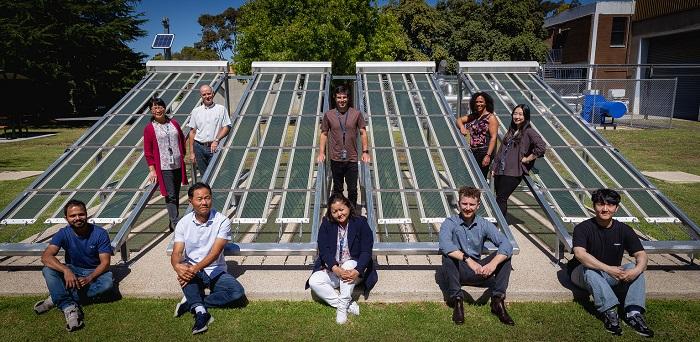A team of international researchers led by CSIRO scientists has achieved a clean energy breakthrough following a decade of research and development, by setting a new efficiency record for fully roll-to-roll printed solar cells.
Printed onto thin plastic films, this lightweight and flexible solar technology will help meet the growing demand for renewable energy by expanding the boundaries of where solar cells can be used.
Compared to the rigid and heavy silicon solar panels, printed solar cells are highly flexible and portable, allowing them to be deployed in applications such as urban construction, mining operations, emergency management, disaster relief, space, defence and personal electronics.
“CSIRO’s thin and lightweight solar cells are now on the cusp of emerging from the lab to create clean energy in the real world,” CSIRO’s renewable energy systems group leader, Dr Anthony Chesman says.
“We’ve solved several engineering problems to achieve record results across a large surface area of interconnected modules.
“Roll-to-roll printing allows for the solar cells to be manufactured on very long, continuous rolls of plastic, which can dramatically increase the rate of production.
“As these methods are already widely used in the printing industry, this makes their production more accessible for Australian manufacturers.
“The successful commercialisation of printed flexible solar cells has the potential to create significant economic and environmental benefits for Australia and the world," Dr Chesman notes.
Researchers from the University of Cambridge, Monash University, the University of Sydney, and the University of New South Wales collaborated with CSIRO on this study with the results published in Nature Communications.

More than a decade’s research and development has culminated in this world-first efficiency outcome for CSIRO’s printable flexible solar team.
CSIRO principal research scientist Dr Doojin Vak said that an automated system produced a comprehensive dataset that will pave the way to use machine learning in future research.
“We developed a system for rapidly producing and testing over ten thousand solar cells a day – something that would have been impossible to do manually,” Dr Vak said.
“This allowed us to identify the optimal settings for the various parameters in the roll-to-roll process and quickly pinpoint the conditions that deliver the best results,” he said.
The new solar cells contain an advanced material called perovskite, a class of emerging solar cell material, which can be formulated into inks and used in industrial printers.
"As these perovskite solar cells are printed onto plastic films, they are very lightweight, highly flexible and portable,” he said. This allows the solar cells to be easily transported to any sunny location, unlike conventional silicon solar panels.
CSIRO is actively seeking industry partners to further develop and commercialise this technology.
Image: Lead author and CSIRO principal research scientist Dr Doojin Vak

